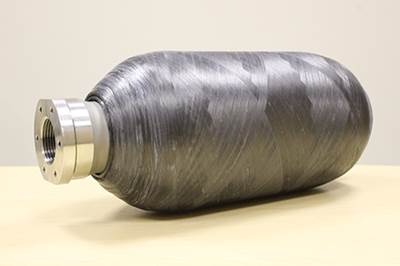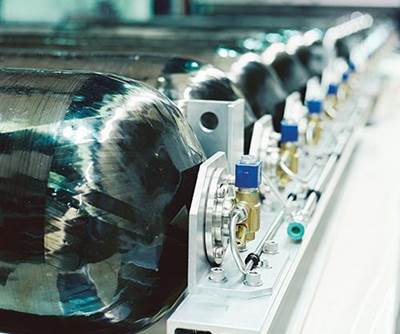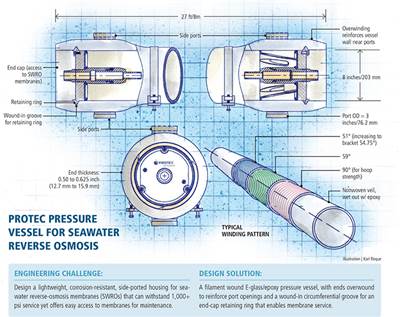Pressure Vessels
San Diego activates largest seawater desalination plant in US
Composite pressure vessels are a critical component of a new $1 billion seawater desalination facility that will supply fresh water to 400,000 people in San Diego County, CA, US.
Read MoreFor carbon fiber, the future certainly looks bright
ÂÌñÏ×ÆÞ's annual Carbon Fiber conference last week included an upbeat outlook for the supply and demand of carbon fiber, with particularly strong growth expected in automotive, pressure vessels and energy development.
Read MoreDuraStor/HOST participants
In 2010, a multi-partner, multi-year research program called Low Cost, Durable Thermoplastic Hydrogen Storage Tanks, or DuraStor, was formed to address these problems by investigating a drop-in replacement for Type IV tanks. A UK-only program called Hydrogen – Optimisation of Storage and Transfer (HOST) picked up where DuraStor left off in mid-2014. These were the participants.
Read MoreThermoplastic composite pressure vessels for FCVs
U.K. consortiums address durability, weight, cost of high-pressure tanks for hydrogen fuel-cell powered vehicles.
Read MoreCNG tanks: Pressure vessel epicenter
In the pressure vessel market, there are a number of competing designs offered around the world, including a small number of new CNG Type V “linerless” designs, which have recently received regulatory approval for use in vehicle applications.
Read MorePressure vessels for alternative fuels, 2014-2023
Lower fuel costs and escalating emissions standards are driving a 10 percent annual growth in alternative fuel pressure vessel sales.
Read MoreDSM thermoplastics featured in CNG and hydrogen tanks
Tanks developed by Belgium-based Covess that use a polyamide liner and outer layer offer up to 70 weight savings in a 40-liter tank for compressed natural gas or hydrogen storage.
Read MoreDesigning pressure vessels for seawater desalination plants
Safe high-pressure service challenges manufacturers of composite pressure vessels.
Read MorePipes vs. vessels
CT editor-in-chief Jeff Sloan notes the value of composite pressure vessel standards in the growing market for seawater desalination.
Read MoreThe first commercial Type V composite pressure vessel
Composites Technology Development's first commercial tank in the Type V category presages growth of filament winding in storage of compressed gases.
Read More





